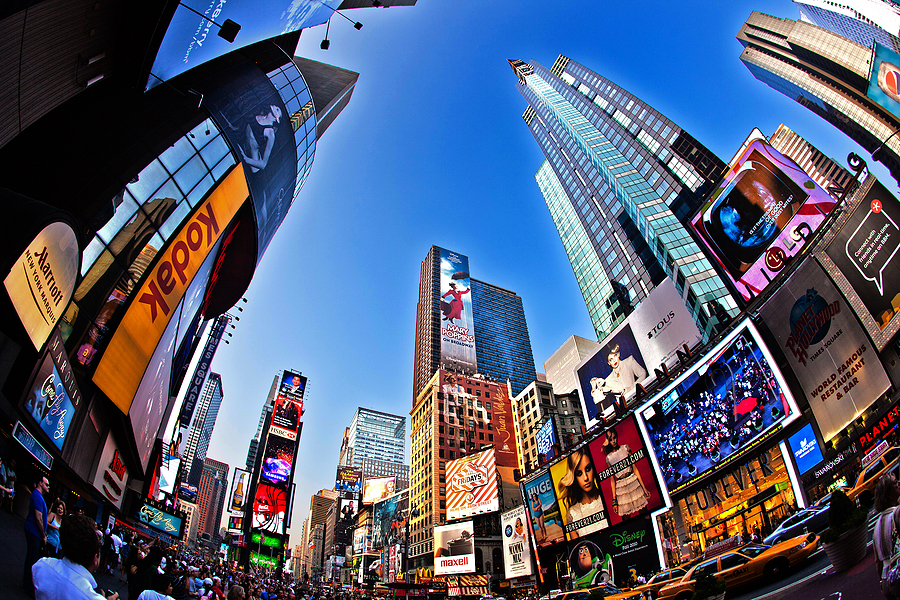One of the most vital uses for large-scale building-sized electronic LED screens is as part of the modern marketing landscape, as it allows businesses to elegantly integrate their online and location advertising campaigns in a striking and dynamic way.
Probably the most famous and coveted location for billboards is Times Square in New York City, with its status as one of the most visited tourist locations in the world giving it a reputation that few other advertising hubs can boast.
Along with Picadilly Circus in London and Akibahara in Tokyo, Times Square not only benefits from having hundreds of thousands of eyes a day pass through it, but also that just having a digital advert displayed in Times Square adds prestige to a marketing campaign.
This, alongside its reputation for using forward-thinking technological advancements, has made Times Square particularly important to discuss in the history of electric signage and large screens.
New York’s Billboard Of Light
The first electrical billboard in New York City was fitted in what is currently known as the Flatiron District in 1892. It was a simple, light-up billboard bought by the Long Island Rail Road (LIRR) to advertise houses for sale on Long Island.
It was, according to some accounts, 80 feet by 60 feet (24.4m by 18.3m), and whilst it lacked the dynamism of modern electronic advertising, it was so monolithic that it stood out immediately.
This was vital, as the LIRR was infamous for losing money and this was an attempt to regain some stability and drive passengers towards Long Island from Manhattan Beach. Within a few years of the billboard, it would start to stabilise, expand and modernise.
Other companies would follow their lead and create similar “billboards of light”. The most notable of these early cases was Heinz, who debuted their infamous “57 Varieties” slogan having seen another light-up billboard boasting “21 Styles of Shoes” in Flatiron District.
This was the first “animated” electronic signage, in that the light bulbs flashed to get the attention of onlookers, something that would become highly influential in the following decades.
Longacre Square’s Show Of Hands
In 1904, the New York Times newspaper moved its headquarters to Longacre Square, which quickly was renamed Times Square and heralded a new century of electronic marketing developments.
The first electronic advert following this realignment was for Trimble Whiskey, featuring a particularly striking version of the Trimble Logo as well as two disembodied hands holding clinking glasses.
Ironically enough, the New York Times did not think much of the bright signage outside of their window, even as billboard space was being rented on the side of One Times Square itself. It even inspired the 1923 dystopian film Metropolis by Fritz Lang.
It would not take long before the Studebaker car company, Budweiser and Regal Shoes joined Timble in Times Square, and eventually, the Wrigley Spearmint Gum and Coca-Cola signs would become iconic symbols of the area.
It became the centre of the advertising world, and the evolution from static light bulbs to animated neon lights and huge LED billboards was seen there before it spread to every other major high street in the world.
